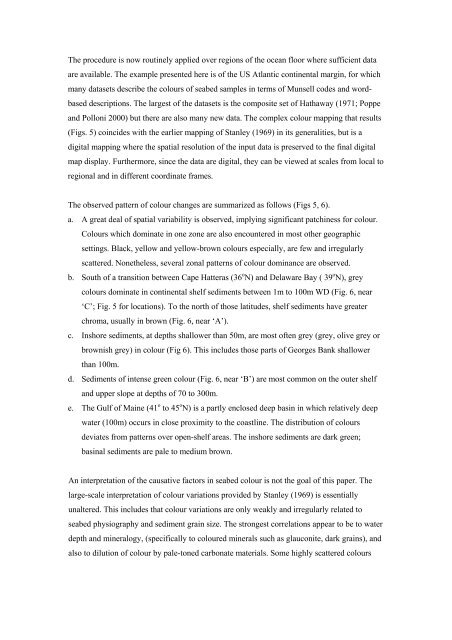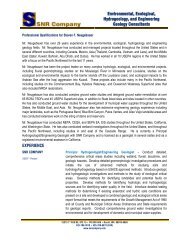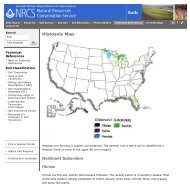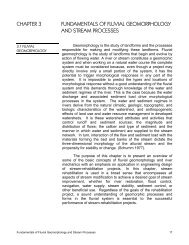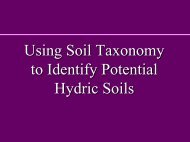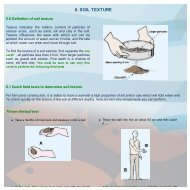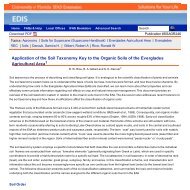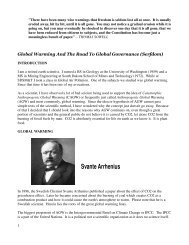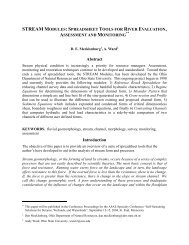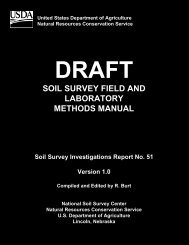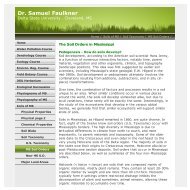Munsell Colors in GSA Document.pdf
Munsell Colors in GSA Document.pdf
Munsell Colors in GSA Document.pdf
You also want an ePaper? Increase the reach of your titles
YUMPU automatically turns print PDFs into web optimized ePapers that Google loves.
The procedure is now rout<strong>in</strong>ely applied over regions of the ocean floor where sufficient data<br />
are available. The example presented here is of the US Atlantic cont<strong>in</strong>ental marg<strong>in</strong>, for which<br />
many datasets describe the colours of seabed samples <strong>in</strong> terms of <strong>Munsell</strong> codes and wordbased<br />
descriptions. The largest of the datasets is the composite set of Hathaway (1971; Poppe<br />
and Polloni 2000) but there are also many new data. The complex colour mapp<strong>in</strong>g that results<br />
(Figs. 5) co<strong>in</strong>cides with the earlier mapp<strong>in</strong>g of Stanley (1969) <strong>in</strong> its generalities, but is a<br />
digital mapp<strong>in</strong>g where the spatial resolution of the <strong>in</strong>put data is preserved to the f<strong>in</strong>al digital<br />
map display. Furthermore, s<strong>in</strong>ce the data are digital, they can be viewed at scales from local to<br />
regional and <strong>in</strong> different coord<strong>in</strong>ate frames.<br />
The observed pattern of colour changes are summarized as follows (Figs 5, 6).<br />
a. A great deal of spatial variability is observed, imply<strong>in</strong>g significant patch<strong>in</strong>ess for colour.<br />
Colours which dom<strong>in</strong>ate <strong>in</strong> one zone are also encountered <strong>in</strong> most other geographic<br />
sett<strong>in</strong>gs. Black, yellow and yellow-brown colours especially, are few and irregularly<br />
scattered. Nonetheless, several zonal patterns of colour dom<strong>in</strong>ance are observed.<br />
b. South of a transition between Cape Hatteras (36 o N) and Delaware Bay ( 39 o N), grey<br />
colours dom<strong>in</strong>ate <strong>in</strong> cont<strong>in</strong>ental shelf sediments between 1m to 100m WD (Fig. 6, near<br />
‘C’; Fig. 5 for locations). To the north of those latitudes, shelf sediments have greater<br />
chroma, usually <strong>in</strong> brown (Fig. 6, near ‘A’).<br />
c. Inshore sediments, at depths shallower than 50m, are most often grey (grey, olive grey or<br />
brownish grey) <strong>in</strong> colour (Fig 6). This <strong>in</strong>cludes those parts of Georges Bank shallower<br />
than 100m.<br />
d. Sediments of <strong>in</strong>tense green colour (Fig. 6, near ‘B’) are most common on the outer shelf<br />
and upper slope at depths of 70 to 300m.<br />
e. The Gulf of Ma<strong>in</strong>e (41 o to 45 o N) is a partly enclosed deep bas<strong>in</strong> <strong>in</strong> which relatively deep<br />
water (100m) occurs <strong>in</strong> close proximity to the coastl<strong>in</strong>e. The distribution of colours<br />
deviates from patterns over open-shelf areas. The <strong>in</strong>shore sediments are dark green;<br />
bas<strong>in</strong>al sediments are pale to medium brown.<br />
An <strong>in</strong>terpretation of the causative factors <strong>in</strong> seabed colour is not the goal of this paper. The<br />
large-scale <strong>in</strong>terpretation of colour variations provided by Stanley (1969) is essentially<br />
unaltered. This <strong>in</strong>cludes that colour variations are only weakly and irregularly related to<br />
seabed physiography and sediment gra<strong>in</strong> size. The strongest correlations appear to be to water<br />
depth and m<strong>in</strong>eralogy, (specifically to coloured m<strong>in</strong>erals such as glauconite, dark gra<strong>in</strong>s), and<br />
also to dilution of colour by pale-toned carbonate materials. Some highly scattered colours


